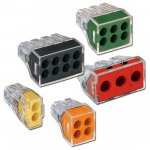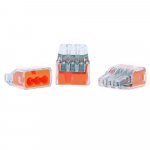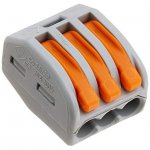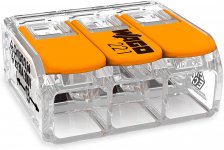Holy petunias, I spent most of today wishing I had these connectors handy. ~11-ish years after building the house and it seems we've reached the bosses tipping point to start updating everything. 3 ceiling fans replaced and more to follow, it would have been so much simpler mating up solid 12 and stranded 20 with these.
My own fault, as Jersey oddly allows you to GC your own home construction, right down to the electrical. Everything is inspected of course but amateurs do goofy stuff. Following grandpa's rule (if one nail is good, 3 must be better) I figured 12 gauge must be better than 14, no lights dimming when the refer started up. And switch legs to every bank of 4-6 can lights, with our bedroom having 4 switches in one box. Had to untangle 5 12ga conductors wire nutted together to rearrange some switches. My hands ache.
Anyway, I'm ordering an assortment before inspiration strikes the boss again.
RMW





